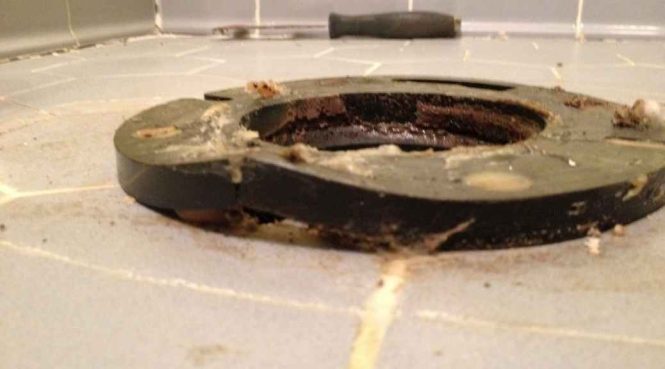

A broken toilet flange can lead to a frustrating and messy situation. This article dives into easy repair solutions for a broken toilet flange, providing step-by-step guidance to tackle this plumbing problem yourself. A broken toilet flange can leak, causing water damage and plumbing problems in your home. Understanding the causes of a broken toilet flange and its repair is crucial for maintaining the health of your plumbing system and preventing costly water damage and repairs. This comprehensive guide will explain the common causes, offer efficient repair techniques, and provide preventative measures. This article will walk you through each step, ensuring a successful repair.
Understanding the Broken Toilet Flange Problem
Identifying the Signs of a Broken Toilet Flange
Leakage around the base of the toilet bowl is a telltale sign. Unusual noises, such as a constant dripping sound, or a gurgling sound, can also indicate a broken flange. If you notice a foul odor emanating from the vicinity of your toilet, a broken flange might be to blame. If you’ve experienced a recent plumbing issue or noticed any of these signs, it’s important to address the problem swiftly to prevent further complications.
Diagnosing the Broken Flange
Visual Inspection
Carefully inspect the base of your toilet bowl. Look for any cracks, breaks, or signs of damage to the flange. This is a critical step as the visual inspection identifies the extent of damage. Identifying the problem is the first step toward an effective and safe repair. Sometimes, the damage is quite clear. Often, you may see a loose or broken piece or find that the flange is cracked or damaged. Look for areas where the flange has come away from the floor or the connections are loose.
Removing the Water
Before you begin, you need to shut off the water supply to your toilet. This is crucial for your safety and to prevent water damage. Turn off the water valve located beneath or behind your toilet. Then, flush the toilet to drain as much water as possible. A fully drained toilet is critical for safe work.
Preparing for the Repair
Gathering the Necessary Tools
Gathering the right tools beforehand will make the process of repairing a broken flange easier and more efficient. You’ll need a wrench, pliers, a pipe cutter, and a new flange. Having the necessary tools readily available is paramount. You will likely need a screwdriver, plumbers putty, and possibly a caulking gun. You may want to prepare an old towel or rags to soak up any water or to avoid any splashes.
Removing the Damaged Flange
Carefully remove the old flange, taking note of how it was attached to the floor. A broken toilet flange repair typically involves removing the old flange. Use the necessary tools and carefully unscrew and remove any old nuts, bolts, and the old flange itself. The exact removal process will depend on the type of toilet flange.
Installing the New Flange
Preparing the Floor
Thoroughly clean the area where the new flange will be installed. Remove any debris or old putty. This clean area is crucial for a secure and stable fit for the new flange. Make sure the area is clean and free of debris.
Installing the New Flange
Using the correct flange for your toilet is important. Follow the manufacturer’s instructions carefully when installing the new flange. Use plumbers’ putty or a similar sealant to create a watertight seal. Check all connections.
Checking the Connections
Carefully inspect the connections between the flange and the toilet to ensure everything is secure and correctly aligned. Testing connections is a crucial step, as loose connections may cause leaks.
Final Steps
Flushing the Toilet
After the installation is complete, flush the toilet a few times to ensure there are no leaks or issues. A thorough flush helps ensure everything works correctly.
Testing for Leaks
Carefully check for any signs of leakage around the base of the toilet. Look for moisture or water accumulation. Any leak warrants immediate attention and re-evaluation of the repair. Ensure the water supply is turned back on slowly to avoid a sudden surge of water pressure.
A broken toilet flange can result from several factors. Rough or improper handling during installation is a frequent cause. Constant stress, such as heavy use or vibrations, can weaken the flange over time. Inadequate support and weak structural integrity can lead to issues. In older homes, the pipes might be weakened, increasing the chances of breakage.
How much does a toilet flange repair cost?
The cost of a toilet flange repair can range from relatively low to moderate, depending on several factors. The complexity of the repair, type of flange used, and labor costs can increase the overall cost. If you’re unsure about the cost or encounter unforeseen issues, consulting a professional plumber is advisable.
What should I do if the repair doesn’t work?
If your broken toilet flange repair doesn’t work, don’t give up! Review the repair process again. Check for any hidden issues in the steps you took. Inspect the connections once more to make sure they are secure. If you have followed all the steps in this guide carefully but still see no improvement, it’s essential to seek professional help from a licensed plumber.
What are the common causes of a broken toilet flange?
In conclusion, fixing a broken toilet flange is a manageable DIY project with the right tools and steps. By understanding the causes, identifying the problem, and following our guide, you can quickly resolve the issue and avoid costly plumbing calls. Remember to always prioritize safety, and if you’re uncertain at any point, consult a professional plumber. For more plumbing tips or other DIY projects, check out our blog! Contact us today for further assistance.